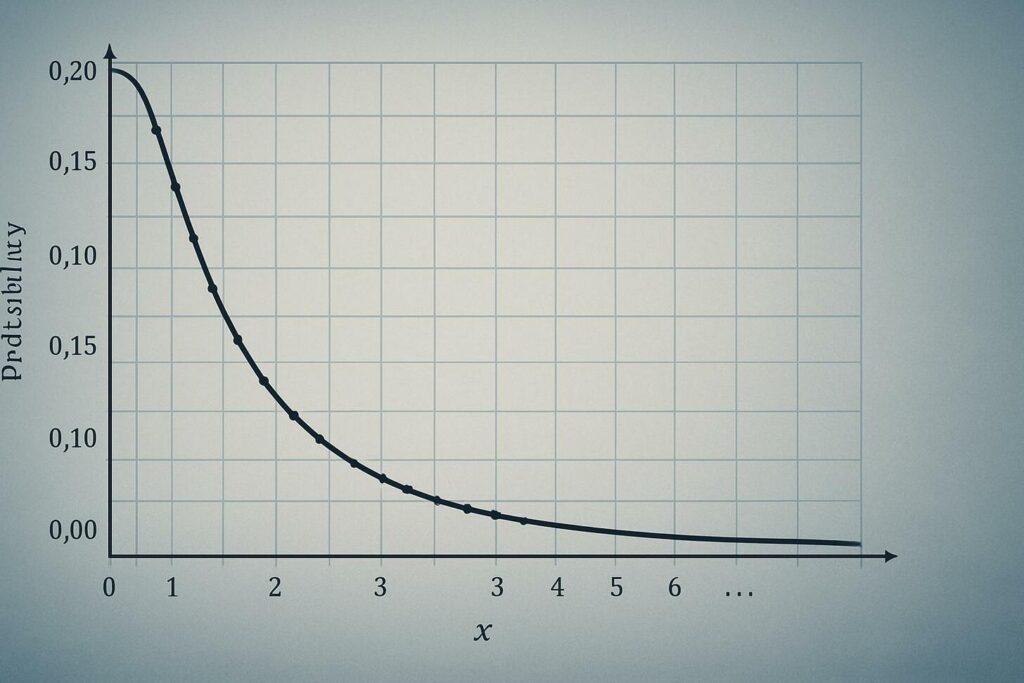Ever wonder why a tiny group of people or actions often create massive results? This idea is at the heart of the power laws mental model. It shows how a small number of causes—like 20% of efforts—can drive 80% of outcomes. Think of it as nature’s way of saying, “Focus on what works.”
The Pareto Principle, or 80/20 rule, is a classic example. In 2022, studies showed that 80% of YouTube views came from just 20% of creators. Wealth distribution works similarly: a small percentage holds most resources. These patterns aren’t random—they’re clues to how systems operate.
Why does this matter? Because spotting these imbalances helps you prioritize. Instead of spreading energy thin, you target high-impact areas. Imagine trimming a tree: cutting the right branches lets sunlight reach the rest.
Have you noticed how some habits or relationships give far more value than others? That’s this model in action. By understanding it, you can make smarter choices in work, finances, and daily life.
Key Takeaways
- The power laws mental model: A few critical inputs often create most results.
- The 80/20 rule is a common example of this pattern.
- Top YouTube creators earn 80% of views, per 2022 data.
- Wealth distribution follows similar imbalances.
- Focusing on high-impact areas boosts efficiency.
Introduction to the Power Laws Mental Model
Can you spot the few factors that drive most results? This idea explains why understanding power imbalances shapes outcomes.
A tiny fraction of actions, words, or people often influence everything else. Think of it like this: 20% of your closet holds 80% of what you actually wear.
Research shows these patterns everywhere. In language, Zipf’s Law reveals that 20% of words make up 80% of conversations. Economists found similar trends: a handful of companies control most market value. This isn’t random—it’s how systems naturally organize.
How does this affect you? If three tasks produce 90% of your daily progress, why waste time on everything else? Imagine trimming a messy garden. Cutting one overgrown bush (change one variable) lets sunlight reach healthier plants. Small shifts create ripple effects.
| Field | Dominant Few | Impact |
|---|---|---|
| Language | Top 100 words | 50% of written text |
| Economics | Top 10% earners | 70% of wealth |
| Productivity | 3 key tasks | 80% of results |
Ever felt that deleting a single app (change one habit) freed hours weekly? That’s understanding power dynamics and the role of mental models in optimizing your time.
Whether in business plans or weekend routines, focusing on high-leverage points transforms outcomes. What tiny tweak could amplify your next project?
Foundations of the Power Laws Mental Model

Why do some events create massive ripples while others fade quickly? This imbalance lies at the core of how systems organize. Mathematical patterns called power laws reveal that most outcomes come from a tiny fraction of inputs.
Picture a library where 5% of books get 95% of checkouts—this uneven spread defines countless natural and human-made systems.
Vilfredo Pareto noticed this in 1896. Studying wealth, he found 80% of Italy’s land belonged to 20% of people. This “heavy tail” pattern means a small group holds disproportionate influence.
Imagine neighborhoods: most houses look similar, but a few mansions dominate the skyline.
Another key idea is scale invariance. Like Russian dolls, patterns repeat at any size. A social media post going viral in a school could mirror global trends.
Whether analyzing city populations or forest fires, the ratio of power stays consistent—a handful of things drive the action over time.
| Field | Example | Impact |
|---|---|---|
| Cities | Top 10% largest | Host 60% of jobs |
| Book Sales | Bestsellers (2%) | Generate 75% revenue |
| Social Media | Top 1% posts | Get 90% shares |
Why care about these patterns? Because spotting them helps you work smarter. If three clients bring 80% of profits, why chase fifty?
Pareto’s century-old observation still guides modern choices—from stock picks to daily routines. What heavy tails are hiding in your world?
The Pareto Principle and the 80/20 Rule
What if cutting 80% of your to-do list could boost results? That’s the magic of the 80/20 rule. In 1896, economist Vilfredo Pareto noticed 80% of Italy’s farmland belonged to just 20% of families. This pattern—now called the Pareto Principle—shapes our world more than you might think.
Historical Context and Origins
Pareto’s discovery began with peas. He found 80% of his garden’s peas came from 20% of pods. Later, he saw the same split in wealth distribution. Today, this imbalance appears everywhere.
Cities, languages, even your closet—a few powerful items get most use, reflecting how our thinking about distribution influences the things we prioritize.
Real-World Examples in Business
Companies live by this rule. 20% of products often drive 80% of sales. For example:
| Industry | Top 20% | Impact |
|---|---|---|
| Retail | Bestselling items | 80% revenue |
| Software | Key features | 90% user engagement |
| Restaurants | Popular dishes | 75% orders |
Ever feel like three tasks shape your whole day? That’s the 80/20 rule in action. Instead of chasing fifty ideas, focus on the five that matter. What one change could multiply your results this week?
Wealth Distribution and Economic Inequality

Have you ever noticed how some neighborhoods have mansions next to modest homes? This visible gap mirrors a global pattern. In 2023, Credit Suisse reported the top 1% owns 45.8% of the world’s wealth.
That’s like one person holding 45 cookies in a 100-cookie jar.
Global Wealth Concentration Insights
Why does this happen? Systems naturally tilt toward imbalance. Tech billionaires gain more power from stock growth than salaried workers earn in lifetimes. Policies, inheritance, and investment access create self-reinforcing cycles that reflect the law of distribution.
Think of it like a snowball rolling downhill—it grows faster as it moves through time, accumulating more value in the world of finance and wealth. This dynamic shapes the way things operate in our economic system.
| Region | Top 10% Wealth Share | Bottom 50% Wealth Share |
|---|---|---|
| North America | 72% | 2% |
| Europe | 58% | 4% |
| Asia-Pacific | 63% | 3% |
Implications for Markets and Societies
This imbalance shapes daily life. Luxury brands thrive while budget stores compete fiercely. Housing markets split—high demand for premium homes, stagnation elsewhere.
When a small group controls most resources, their spending habits drive trends and reflect the power dynamics at play. Ever wonder why electric cars get more attention than public transit improvements?
Communities feel this too. Schools in wealthy areas often have better funding due to the law of distribution in resources. Healthcare access varies wildly, impacting the energy of community health.
But there’s hope: micro-investing apps and education programs help bridge gaps. What one shift could make your financial life fairer and reshape the way we perceive value?
YouTube and Media: Concentration of Views
Why does your YouTube feed look the same every time you open the app? A 2022 Pew Research study found that just 3% of creators attract over 90% of all views.
This isn’t a coincidence—it’s how digital platforms naturally organize. When a handful of channels dominate, it changes the way we discover content and share ideas.
Dominance of Top Creators
Think about the last video you watched. Was it from someone like MrBeast or PewDiePie? These mega-creators pull in billions of views yearly, while smaller channels struggle to get noticed.
It’s like a concert where one singer’s voice drowns out the rest of the choir.
| Platform | Top Creators | View Share |
|---|---|---|
| YouTube | 3% | 90% |
| TikTok | 5% | 85% |
| 4% | 88% |
Data Trends from 2022 Studies
Pew’s research shows this gap keeps growing. In 2021, the top 5% had 80% of views—by 2022, it jumped to 90%. Why? Algorithms favor popular content, and viewers stick with familiar names. Ever scroll past a small channel without clicking? That’s the system at work.
This pattern isn’t unique to YouTube. Think about Spotify’s top artists or Netflix’s trending shows. A few hits get all the energy from audiences. But here’s the twist: focusing on these giants helps platforms grow faster. More views mean more ad revenue, which funds better features.
Does this mean new creators can’t succeed? Not at all! It just means finding your niche matters in this complex system of distribution and power dynamics.
What one idea could make your content stand out in a crowded space and leverage the relationship between behavior and success?
Scientific Research and Publication Patterns

Why do a handful of names keep appearing in academic citations? Research productivity follows a clear pattern: a small group of scientists drives most discoveries.
In 1963, Derek Price noticed this imbalance—he found that half of all published papers came from just the square root of total researchers. If 100 people work in a field, about 10 create 50% of the output.
Understanding Price’s Law
Let’s break this down. Imagine a lab with 25 team members. Price’s Law suggests 5 people (the square root of 25) would author half the studies. This isn’t about talent alone—resources, collaboration, and focus play big roles. A 2021 analysis of medical journals showed 12% of authors wrote 48% of COVID-19 papers during peak research periods.
This pattern repeats across fields. Physics Nobel laureates often have 10x more citations than peers. In biology, key labs secure most funding grants. Even student projects follow this trend—ever had a group where two classmates did 80% of the work?
Why does this matter? Identifying high-output teams helps institutions allocate resources wisely. Journals can spotlight rising stars, while young researchers learn where to collaborate. Does your workplace have a few people who consistently outpace others?
From particle accelerators to climate studies, skewed contributions shape progress. Recognizing this helps us celebrate top performers while creating systems to uplift others. What example of uneven teamwork have you noticed lately?
The Heavy Tail in Skewed Distributions
What if the biggest surprises in life aren’t random at all? Statisticians call this a “heavy tail”—a pattern where rare events occur more often than we expect in the distribution of outcomes.
Unlike normal distributions (think height or test scores), heavy-tailed systems illustrate the power of certain mental models, revealing a few extreme outcomes that skew our perception of reality.
Imagine flipping a coin where 1% of flips land sideways and win $1 million, highlighting the relationship between behavior and unexpected results.
Characteristics of Heavy Tails
These patterns defy our intuition. For example, 98% of earthquakes are minor, but the 2% causing massive damage dominate headlines.
Financial markets work similarly—a handful of days account for most stock gains or losses. Research shows heavy-tailed systems have:
- Frequent “black swan” events
- No predictable average outcome
- Extreme values that dwarf typical results
Significance in Real-Life Phenomena
Why care? Recognizing heavy tails helps us prepare better. Cities in hurricane zones build stronger infrastructure. Investors diversify portfolios to handle market crashes. Even social media follows this rule—most posts get little attention, but a few go viral overnight.
| Normal Distribution | Heavy Tail | Real-World Example |
|---|---|---|
| Predictable averages | Unstable averages | Monthly rainfall |
| Rare extremes | Common extremes | Tech startup valuations |
| Bell curve shape | Long right skew | Celebrity incomes |
Ever had a single conversation that altered your career path? Or a storm that reshaped your neighborhood? These outlier moments remind us: life’s biggest changes often come from unexpected places. How could understanding heavy tails help you navigate risks tomorrow?
Mathematical Representation of Power Laws

What do earthquakes and Instagram likes have in common? Both follow patterns described by equations like P(x) ~ x. This formula shows how small causes often lead to big effects. The exponent α (alpha) determines how steeply events become rare.
Power Laws Mental Model: What the Exponent Reveals
Imagine ranking pizza shops by sales. If α = 2, the top shop sells 4x more than #2. With α = 1, #1 outsells #2 by just 2x. A higher α means faster drop-offs—like how TikTok fame fades quicker than YouTube stardom.
| Alpha Value | Real-World Example | Impact |
|---|---|---|
| 1.5 | Book sales | Steady decline |
| 2.5 | Earthquake energy | Rare mega-events |
| 3.0 | Website traffic | Few viral hits |
Seeing Patterns in Straight Lines
Scientists use log-log graphs to spot these relationships. When both axes use logarithmic scales, curved data becomes straight. If social media followers vs. engagement forms a line, you’ve found a skewed pattern.
Here’s how it works:
- Plot data points on special graph paper
- Draw best-fit straight line
- Slope equals -α
Ever noticed how city populations cluster? Plot them log-log style, and you’ll see why Tokyo dwarfs Osaka. This math isn’t just for labs—it explains everyday behavior in money, fame, and success.
Isn’t it wild how a simple equation captures everything from forest fires to Spotify streams? What relationship in your way of thinking follows this hidden power law distribution structure?
Applications in Business and Marketing

What if trimming your client list could double profits? Many successful companies use patterns to focus on what truly drives growth. By analyzing where results come from, leaders make smarter choices—like watering the greenest plants in a garden.
Strategies for Resource Allocation
Imagine a coffee shop discovering 70% of revenue comes from 30% of regulars. That’s the 80/20 rule in action. Smart teams:
- Track which products generate most sales
- Invest in top-performing marketing channels
- Train staff to nurture VIP customers
A SaaS company might find 15% of features drive 85% of user engagement. Redirecting development funds to those tools? That’s how models turn data into dollars.
| Industry | Focus Area | Outcome |
|---|---|---|
| Retail | Top 20% SKUs | +65% revenue growth |
| Consulting | Key 10% clients | Tripled retention |
| E-commerce | Best-converting ads | Halved CAC |
Leveraging High-Impact Customer Segments
Why do luxury brands pamper their top spenders? Because 5% of customers often account for 40% of profits. One hotel chain boosted repeat bookings by 200% after creating personalized packages for frequent travelers.
Marketing teams use this pattern too. Email campaigns targeting active subscribers see 3x higher open rates than broad blasts. Ever received a “We miss you” discount from your favorite store? That’s strategic prioritization.
Spotting these key relationships isn’t luck—it’s skill. Which three clients or habits fuel 80% of your success?
More Personal Productivity with the 80/20 Rule

How many hours do you spend daily on tasks that barely move the needle? The 80/20 rule reveals that a sliver of your efforts creates most results.
Just as top companies focus on bestselling products, you can design a life where small actions yield big wins.
Spotting What Truly Matters
High-leverage activities are like golden threads in a tapestry—pull them, and everything tightens. Think:
- Morning workouts that boost energy for 12+ hours
- Strategic work tasks that impress bosses or clients
- 20 minutes of focused learning vs. 2 hours of distracted scrolling
| Activity | Time Spent | Impact |
|---|---|---|
| Planning key goals | 15 mins/day | 70% productivity boost |
| Endless meetings | 3 hours/week | 12% useful outcomes |
Notice how some habits act as multipliers? A 2023 University of Michigan study found people who prioritized exercise and deep work sessions achieved 4x more daily progress than those chasing trivial tasks.
Business strategies work here too. Just as CEOs analyze profit drivers, ask: “What three tasks today will give 80% of my satisfaction?” Maybe it’s finishing a project phase, calling a mentor, or meal prepping.
Ready to test this? Write down tomorrow’s to-dos, then circle the two that matter most. Watch how understanding this imbalance transforms overwhelm into momentum. What tiny tweak could amplify your week?
Educational: Focusing on Key Learning Areas

What if mastering three subjects could boost your grades more than ten? Just like companies focus on top-selling products, students thrive by targeting high-impact topics.
A small number of skills often drive most academic success—think math basics improving science scores or writing skills enhancing history essays.
Prioritizing High-Impact Knowledge
Research shows students who identify core subjects improve 2x faster. For example:
| Focus Area | Time Invested | Outcome |
|---|---|---|
| Algebra fundamentals | 30 mins/day | +40% test scores |
| Critical reading | 20 mins/day | Better essay grades |
This mirrors how companies allocate resources—why pour energy into 20 tasks when two deliver 80% of results? A student mastering key concepts in biology could ace labs and exams, while spreading effort thinly leads to burnout.
Ever noticed how some study sessions feel effortless yet impactful? That’s the rule of working smarter, not harder. Track which topics appear most in tests or projects. Double down on those, and watch progress compound.
Which three lessons gave you the biggest “aha” moments this year? Prioritizing them might just change your learning curve.
Tech, Networks, and Scale-Free Systems

Ever clicked a link and wondered why certain websites dominate your browsing? Digital networks—like social media or the internet itself—aren’t random. They naturally form around a few key hubs. These “super connectors” shape how information flows, much like major highways guide traffic.
Network Effects in the Digital Age
Think of your favorite apps. Platforms like Instagram or YouTube rely on a tiny fraction of users to drive most engagement. A 2023 study found that 5% of accounts create 85% of posts on major networks.
This imbalance isn’t a flaw—it’s baked into how connections grow.
| Platform | Top 1% Users | Activity Share |
|---|---|---|
| Twitter/X | 2 million | 75% tweets |
| 0.3% | 50% comments | |
| Amazon | Top 100 sellers | 60% revenue |
Why does this thing happen? Early adopters attract more followers, creating a snowball effect. A viral TikTok dance isn’t luck—it’s the underlying pattern of how networks evolve. The first movers become central hubs, while others orbit around them.
Your online reality mirrors this. When was the last time you visited a small blog versus Wikipedia? Even website links follow the rule: 90% of clicks go to 10% of pages. This point explains why new apps struggle unless they tap existing networks.
Does your social feed feel repetitive? That’s scale-free design in action. A few voices drown out the rest. But here’s the twist: recognizing this helps you navigate smarter. Which three accounts or sites shape your digital world?
Analysis: Power Laws vs. Normal Distribution

Picture two different worlds of data—one predictable, the other full of surprises. Most everyday measurements, like heights or test scores, cluster around averages.
But some systems, like wealth or social media fame, follow wilder patterns where extremes dominate. Knowing which concept fits your data changes everything.
Understanding Disparities in Extreme Events
Normal distributions assume most values hover near the middle. Think of a school’s shoe sizes: 90% fall within a narrow range. But power law mental models? They’re like lightning strikes—rare yet game-changing.
A 2023 study showed 0.1% of TikTok creators get 50% of viral views. Averages here mislead.
| Aspect | Normal Distribution | Power Laws Mental Model |
|---|---|---|
| Typical Example | Human Height | Billionaire Wealth |
| Extreme Events | Rare (3σ rule) | Common (long tail) |
| Data Spread | Symmetrical | Skewed right |
Choosing the Right Model for Data Analysis
Ever tried planning for “average” rainfall in a drought-prone area? Normal models fail when outliers matter. Power laws mental models excel in systems where one person, event, or variable can tilt the scales. For instance:
- Sales teams using normal stats miss top 5% clients driving 70% revenue
- Schools focusing on average grades overlook star students shaping class curves
Why does this performance gap matter? Picking the wrong tool hides risks and opportunities.
If your data has “superstar” points, the power laws mental model reveals what averages erase. When did you last encounter a situation where typical stats told half the story?
Complex Systems and Statistical Models

How does a single raindrop start a flood? This puzzle shows how tiny shifts create massive growth in nature and society. Special math tools help us see hidden patterns in chaotic systems—like finding order in a storm.
Think of weather forecasts. A 1°C temperature change might trigger hurricanes weeks later. Stock markets work similarly—small news events can swing prices wildly.
Researchers use these process models to predict everything from climate shifts to viral trends.
Here’s why it matters:
- Identifying key pressure points in systems
- Spotting which ones drive 90% of outcomes
- Making better decisions with limited data
| System | Small Change | Big Outcome |
|---|---|---|
| Weather | Ocean current shift | Drought patterns |
| Markets | Interest rate tweak | Housing boom |
| Social Media | One viral post | Brand awareness spike |
Ever notice how deleting one app frees up phone storage? That’s system thinking in action. Cities use this process too—adding bike lanes reduces traffic more than widening roads. Tiny tweaks often beat big overhauls.
What growth could you spark by adjusting daily routines? Maybe waking 15 minutes earlier creates time for exercise. Or focusing on three clients boosts monthly income. Which ones in your life act as hidden multipliers?
Deeper Into The Power Laws Mental Model

How does a single idea reshape entire industries? This question lies at the core of understanding skewed systems across areas like business, science, and urban planning. From coffee shop sales to viral app launches, the same rule applies: a tiny fraction of inputs drive most outcomes.
Consider online shopping platforms. A 2023 report showed 15% of products generate 85% of e-commerce revenue. Healthcare follows similar patterns—20% of patients account for 80% of hospital visits. Even city growth isn’t random: a few infrastructure projects often determine regional economic scale.
| Field | Key Drivers | Impact |
|---|---|---|
| Retail | Top-selling items | 80% profits |
| Healthcare | Chronic conditions | 75% costs |
| Urban Planning | Transit hubs | 90% foot traffic |
These imbalances aren’t flaws—they’re features. Systems naturally amplify certain elements based on size and connectivity. A neighborhood park might attract more visitors than larger ones simply because it’s near a subway station.
Ever noticed how one friend’s recommendation shapes your weekend plans? Or how a single app feature keeps you loyal? These everyday moments mirror global trends. The challenge lies in spotting which levers create outsized effects.
What part of your life follows this hidden blueprint? Maybe three clients bring most income, or two habits boost daily joy. Recognizing these patterns helps you invest energy where it multiplies.
Conclusion
How often do you notice a handful of elements shaping entire outcomes? From wealth gaps to viral videos, we’ve seen how small inputs create disproportionate results.
These imbalances aren’t flaws—they’re baked into the structure of our world.
Recognizing these patterns helps you make smarter moves. Whether trimming tasks that drain time or investing in high-value relationships, focus amplifies progress. Studies show systems from economics to digital media thrive when we prioritize what works.
Here’s your playbook: a. Identify the 20% driving 80% of results, b. Cut low-impact activities ruthlessly, c. Design habits around what multiplies gains
Ever deleted an app and suddenly had hours free? That’s strategic trimming in action. Apply this lens to finances, work, and learning.
Which one shift could accelerate your goals this month?


